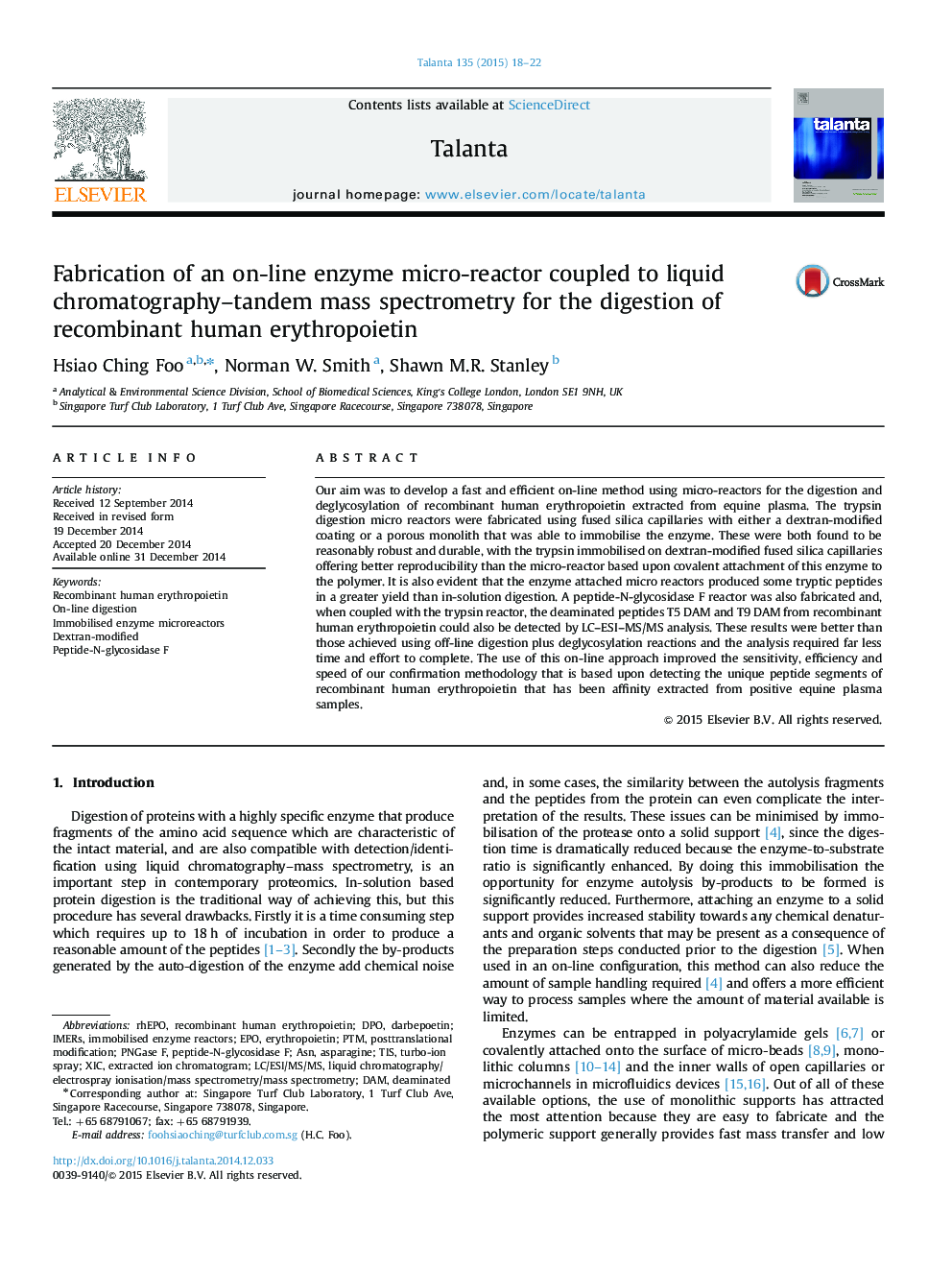| کد مقاله | کد نشریه | سال انتشار | مقاله انگلیسی | نسخه تمام متن |
|---|---|---|---|---|
| 1241953 | 1495800 | 2015 | 5 صفحه PDF | دانلود رایگان |
• In-house fabrication trypsin digestion micro reactors using fused silica capillaries.
• A peptide-N-glycosidase F reactor was fabricated and coupled with the trypsin reactor.
• Non-glycosylated and glycosylated peptides were able to achieve using this on-line approach.
Our aim was to develop a fast and efficient on-line method using micro-reactors for the digestion and deglycosylation of recombinant human erythropoietin extracted from equine plasma. The trypsin digestion micro reactors were fabricated using fused silica capillaries with either a dextran-modified coating or a porous monolith that was able to immobilise the enzyme. These were both found to be reasonably robust and durable, with the trypsin immobilised on dextran-modified fused silica capillaries offering better reproducibility than the micro-reactor based upon covalent attachment of this enzyme to the polymer. It is also evident that the enzyme attached micro reactors produced some tryptic peptides in a greater yield than in-solution digestion. A peptide-N-glycosidase F reactor was also fabricated and, when coupled with the trypsin reactor, the deaminated peptides T5 DAM and T9 DAM from recombinant human erythropoietin could also be detected by LC–ESI–MS/MS analysis. These results were better than those achieved using off-line digestion plus deglycosylation reactions and the analysis required far less time and effort to complete. The use of this on-line approach improved the sensitivity, efficiency and speed of our confirmation methodology that is based upon detecting the unique peptide segments of recombinant human erythropoietin that has been affinity extracted from positive equine plasma samples.
Figure optionsDownload as PowerPoint slide
Journal: Talanta - Volume 135, 1 April 2015, Pages 18–22
